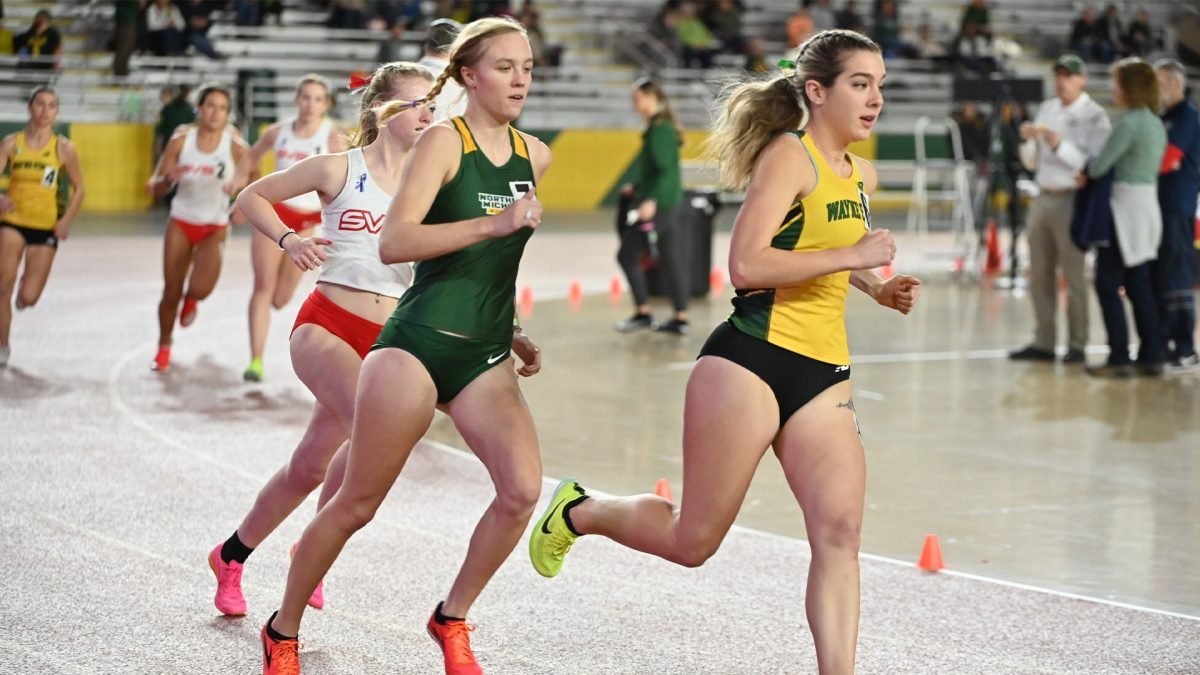Unusual mascots have a history of unique stories
There is a strong sense of community pride across townships in Michigan’s Upper Peninsula. Across our snow-capped landscape, our people have taken it upon themselves to brand their own identity, calling Upper Michigan residents “Yoopers,” while down-state residents are referred to as “Trolls.” Yooper residents, not satisfied enough with their regional nickname, stepped up their unusual identities by stretching unusual nicknames to high schools. Only in the U.P. could you find mascots such as Flivvers, Nimrods and Wykon’s.
Twenty miles south of Marquette sits the quiet town of Gwinn, with a population just shy of 2,000 residents. After land was acquired in 1902 by the Cleveland-Cliffs Iron Club, renovations began for a small residential community to support mining operations in the surrounding area, according to the Gwinn Chamber of Commerce. Keeping up with the beautiful scenery of the area, houses and roads were built around existing trees, while new trees were planted to preserve the natural aesthetic.
The community took up the nickname “Modeltowners,” a trace which carried over to the athletic department at Gwinn High School. A growing community in pre-Great Depression days, the town was deeply affected by the stock market crash of 1929 as the Cleveland-Cliffs Iron Club was unable to afford to keep up renovations for the town.
At Watersmeet High School, fans proudly cheer on their Nimrods. Featuring a rugged sports-man wearing a ‘coon-pelt cap, this sportsman figure has roots stretching to biblical ties. Nimrod was a mighty hunter and the son of Cush and great-grandson of Noah, from NFHS.org “Unusual
Nicknames: Watersmeet Nimrods.” Located in the Ottawa National Forest near the Wisconsin border, hunting is a way of life for the residents of this good-spirited community. The legend of the Nimrod lives on with ESPN featuring three commercials in 2004, starring the infamous mascot and varsity basketball team. After the commercials aired, fan requests to purchase merchandise was overwhelming, leading the township to begin selling t-shirts, sweatshirts and mugs. ESPN.com reported that over $35,000 has been raised since.
Just down the road at Marquette High School (MHS), an ongoing controversy rages on over the name and logo of the “Redmen” nickname. While many residents in the area are proud of their Marquette heritage and experiences gained while attending MHS, others believe the figure is in bad taste.
“Groups of people do care how they are depicted and it does impact our relationships between people in our society,” said Associate Professor of Native American Studies at NMU, Martin Reinhardt.
Board members from Marquette Area Public Schools have met with local tribe leaders to ensure the mascot is represented appropriately. More focus on Native American culture is worked into students curriculum to prevent any discriminatory beliefs from developing. Despite these efforts, many members of the community are still against the representation of the nickname.
Regional nicknames are common to townships in the area, with the Calumet Copper Kings electing to represent the industry that helped establish their historic community. Located in the Keweenaw Peninsula north of Houghton, the small mining community of Calumet was once the main mining source of copper in the United States, producing over half of the countries copper between 1871-80. The price of copper dropped after the end of World War I and the mines closed after the Great Depression with families flocking to Detroit in search of work.
Ishpeming High School also embraced the mineral history of the area, adopting the nickname Hematites. A hematite is the mineral form of iron oxide. It is the oldest known iron oxide mineral and can often be found in rocks and soil. Hematite can be found in an assortment of colors, from black-steel to red and is found in iron-dense environments.
Settled in 1862, the name Ishpeming comes from the Chippewa language meaning ‘heaven’ or ‘great elevation.’ The strength of the Hematite is mighty, as the ore has propelled the varsity football team to five State Championships since 1975, including three between 2012-15.
Other infamous Upper Peninsula mascots include the mighty Flivvers of Kingsford. A flivver is more commonly known as a cheap car or aircraft, typically in poor condition or much older. In Escanaba, the Eskymos build igloos around their opponents to freeze out the competition. Don’t feed the people of Houghton High School after midnight, they might share a resemblance to their movie-star companion, the Gremlins. Lastly, the mythical Wykon, a three-legged creature created in 1968 by three faculty members of West Iron County Public Schools, might come up and spook you in the night.
In the great state of Michigan, they say that if you seek a pleasant peninsula, look about you. When it comes to high school nicknames in the north, if you seek a unique mascot, look about you. You’ll come to notice that our nimrods are quite friendly in these parts.























